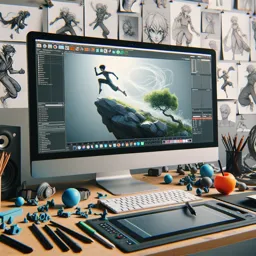What is 3D Animation?
3D animation is the art of creating moving images in a three-dimensional digital environment. Unlike traditional 2D animation, which uses flat graphics, 3D animation employs digital modeling and rendering techniques to produce lifelike characters, objects, and environments that can be viewed from any angle. This powerful form of visual storytelling is used across many industries—including film, video games, advertising, architecture, and science.
The Creative Process of 3D Animation
Creating 3D animation involves a series of technical and artistic steps, each crucial to building compelling and believable scenes:
- Modeling: Crafting 3D characters, props, and environments using specialized software. These digital models form the foundation of the animation.
- Texturing: Applying surface details like colors, patterns, and materials to give models a realistic or stylized appearance.
- Rigging: Building internal skeletons and control systems so that models can move naturally when animated.
- Animation: Moving models through space over time using keyframes and motion controls. This brings characters to life as they walk, express emotions, and interact.
- Lighting and Rendering: Placing digital lights and cameras to define the mood and perspective of each scene. Rendering is the final step that converts the 3D scene into 2D images or video with cinematic quality.
Applications of 3D Animation
3D animation goes far beyond entertainment. It serves vital roles in many fields:
- Film & Television: Brings imaginative characters and worlds to life in blockbusters and animated series.
- Video Games: Creates dynamic environments and fluid character movements for interactive experiences.
- Advertising: Delivers complex ideas and product visuals in compelling, memorable formats.
- Architecture & Design: Helps visualize structures and objects before they are physically built.
- Education & Science: Demonstrates abstract or complex concepts such as biology, physics, or space exploration in an accessible and engaging way.
Getting Started in 3D Animation
If you’re eager to dive into 3D animation, start with the basics of modeling and animating simple objects using beginner-friendly software. Countless online tutorials, courses, and communities can help you gain practical experience. As your skills grow, you’ll uncover limitless opportunities for storytelling, design, and visual expression in the 3D world.

















